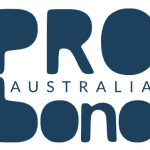Three ways that job seekers can get ahead in the current job environment

31 March 2021 at 10:00 am
In today’s tough COVID-19 impacted economic environment, a new job can be trickier to secure than ever before. Claire King shares three of the many ways you can position yourself for the best chance of success.
Get LinkedIn (or risk being linked out)
There are many reasons why LinkedIn is a vital tool for anyone looking to further their career.
Perhaps most importantly, statistics have shown that 89 per cent of recruiters have filled a position using LinkedIn at some point in time and 97 per cent of HR professionals use LinkedIn when recruiting new hires.
Indeed, the first thing a hiring manager will usually do when they are considering a job candidate is to look them up on LinkedIn to find out more about them. More than just a resume, LinkedIn provides a platform to “tell your story”. So what does an incomplete LinkedIn profile (or worse still, no LinkedIn profile at all) say about you?
There are a plethora of articles available online to help you optimise your LinkedIn profile to “all-star” status. LinkedIn says users with “all-star” profiles are 40 times more likely to receive opportunities through LinkedIn – that could be job opportunities, approaches from new clients, new connections to subject matter experts and more.
Another reason LinkedIn is an essential tool is because it can open up a world of networking opportunities.
It’s not what you know, it’s who you know
One of the first things ImproveMe co-founder Brent Lehmann encourages those he professionally mentors to do is “network, network, network”.
But for some, the idea of reaching out to network with people they don’t know (or don’t know well) is enough to cause them to shudder or break into a cold sweat! Thankfully, LinkedIn is an amazing tool to use for networking in a less fear inducing manner.
A good place to start is to write a list of everyone you know – from relevant family and friends to work colleagues (past and present), clients, industry influencers, people you’ve met at events, individuals that you might not know personally but would like to have as a contact in the future, as well as anyone relevant you may be connected to on other social media. From there, you can work through your list and send a LinkedIn connection request to each person, making sure to include a personalised comment every time.
Once you have built up your LinkedIn network, be sure to engage with posts from your contacts and comment where possible. This can help to raise your profile as an individual who has value to add to the conversation.
You could also consider doing posts about your situation and what you are seeking to achieve, what you have been experiencing in your job hunt, or sharing your personal or professional opinion on a subject.
Create some visibility for yourself! You never know what opportunities could arise from your network as a result.
Go big with micro-credentialing
Micro-credentials are small qualifications that demonstrate your knowledge and skills in a particular topic. They are often quick to complete and provide a way to upskill and add depth to your resume and LinkedIn profile, without having to invest in a long-term course such as a diploma or degree.
With so many choices available online via universities and other education platforms, micro-credentialing options are extremely accessible. They can cover hard skills – digital marketing, financial skills or cyber security for example – or soft skills such as leadership, critical thinking or customer service.
You may be required to complete an assessment to attain a completion status for a micro-credential, and some educational institutions provide digital badges that you can add to your LinkedIn profile, certifying your course completion.
Micro-credentials definitely hold authority in today’s fast paced employment landscape and offer the perfect opportunity to upskill in a way that might just make you stand out from other candidates in the recruitment process for your ideal role.
About the author: Claire King is a co-founder of ImproveMe, an online platform designed to help individuals prepare for a fulfilling career path, via its two-part StrengthsPlus framework.








